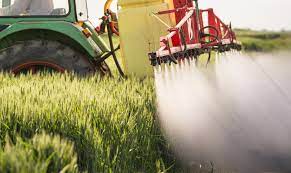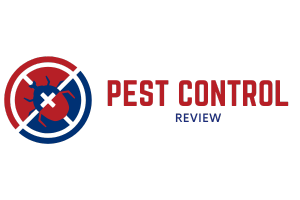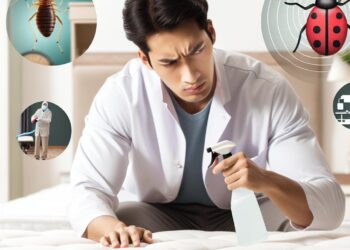Introduction:
Pests are a common problem that homeowners and business owners face. They can cause damage to property, spread diseases, and even pose a threat to human health. To combat this problem, many people turn to pest control methods. However, in their efforts to get rid of pests, they often make mistakes that can be costly and ineffective. This article will review the most common mistakes people make when trying to control pests and provide guidance on how to avoid them.
Mistake 1: Ignoring the Root Cause of the Problem
One of the biggest mistakes people make when trying to control pests is ignoring the root cause of the problem. Pests are often attracted to a specific environment, such as food or water sources, or even warm spaces. Failure to address these issues will only provide a temporary solution to the problem. Therefore, it’s essential to identify the root cause of the problem and eliminate it to prevent pests from returning.

Mistake 2: Using the Wrong Type of Pesticide
Using the wrong type of pesticide is another common mistake. Not all pesticides are created equal, and using the wrong one can be ineffective or even harmful. For example, some pesticides are only effective against certain pests, while others may harm non-target organisms, including pets and humans. It’s essential to read the label of the pesticide and understand the pests it’s effective against and any precautions or hazards.
Mistake 3: Relying Solely on Chemical Pest Control
Relying solely on chemical pest control is another mistake people make. While pesticides can be effective, they’re not the only solution. Integrated Pest Management (IPM) is a holistic approach to pest control that includes a combination of techniques, including cultural, mechanical, and biological control methods. Using IPM can reduce the need for pesticides and make pest control more sustainable.
Mistake 4: Not Following Instructions
Another common mistake is failing to follow instructions when using pesticides. Pesticides can be dangerous if not used correctly, and not following instructions can result in harm to yourself, others, or the environment. Always read and follow the instructions on the pesticide label carefully. Additionally, it’s important to wear protective clothing, such as gloves and goggles, when using pesticides.

Mistake 5: Overusing Pesticides
Overusing pesticides is another mistake people often make. Using more pesticide than recommended won’t make it more effective and can be harmful. Additionally, overuse can lead to pests developing resistance to the pesticide, making it ineffective in the long run. Use pesticides according to the instructions and only when necessary.
Mistake 6: Not Maintaining a Clean Environment
Not maintaining a clean environment is another mistake that can lead to pest infestations. Pests thrive in dirty and cluttered environments, where they can find food, water, and shelter. Keeping a clean and tidy environment can prevent pests from infesting your home or business in the first place.
Mistake 7: Not Seeking Professional Help
In some cases, people may attempt to control pests on their own without seeking professional help. While DIY methods can be effective, some pest infestations may require the expertise of a professional pest control company. Not seeking professional help can lead to ineffective control measures and even worsen the problem. Therefore, it’s crucial to recognize when professional help is necessary and seek it promptly.

Mistake 8: Neglecting Preventative Measures
Prevention is always better than cure, and neglecting preventative measures is another common mistake people make when it comes to pest control. Some examples of preventative measures include sealing cracks and crevices, keeping food in sealed containers, and disposing of trash properly. By implementing preventative measures, you can reduce the likelihood of a pest infestation occurring in the first place.
Mistake 9: Not Addressing Multiple Pest Types
Many people make the mistake of assuming that pest control measures designed for one type of pest will work for all pests. However, this is not always the case. Different pests require different control measures, and ignoring this fact can lead to an ineffective approach to pest control. Therefore, it’s crucial to identify the type of pest you’re dealing with and use the appropriate control measure.
Mistake 10: Not Checking for Residual Effects
Pesticides can have residual effects, meaning they can remain active after application. Neglecting to check for residual effects can be harmful, especially if children or pets come into contact with the treated area. It’s important to follow the instructions on the pesticide label carefully, including the waiting period before entering the treated area.
Mistake 11: Failing to Monitor and Evaluate Pest Control Strategies
Another common mistake is failing to monitor and evaluate pest control strategies. Pest control is an ongoing process, and it’s essential to monitor the effectiveness of the methods used. If a particular method isn’t working, it’s time to try a new approach. It’s also important to evaluate the effectiveness of the pest control strategies regularly to ensure that they’re still working.
Mistake 12: Using Homemade Remedies Without Research
Using homemade remedies is a popular DIY approach to pest control. However, not all homemade remedies are effective, and some can even be harmful.

Additional Tips for Effective Pest Control
In addition to avoiding the common mistakes mentioned above, there are several other tips that can help make pest control more effective:
- Regularly inspect your property for signs of pest infestations. Look for droppings, nests, or damage to property that may indicate the presence of pests.
- Keep a record of pest activity to help track the effectiveness of pest control strategies and identify any patterns.
- Seal any cracks, holes, or gaps in your property that may provide entry points for pests.
- Store food in airtight containers and clean up spills and crumbs promptly to eliminate food sources for pests.
- Use natural pest control methods, such as diatomaceous earth or essential oils, as a safer alternative to chemical pesticides.
- Use traps to monitor and control pest populations, especially in areas where chemical pesticides are not appropriate.
- Educate yourself on the biology and behavior of the pests you’re trying to control. This can help you develop effective pest control strategies and understand why certain methods may or may not work.
Conclusion:
Controlling pests can be challenging, but avoiding these common mistakes can help you achieve your goal effectively and safely. By identifying the root cause of the problem, using the right type of pesticide, following instructions, avoiding overuse, and maintaining a clean environment, you can keep pests at bay and ensure a pest-free home or business.
















